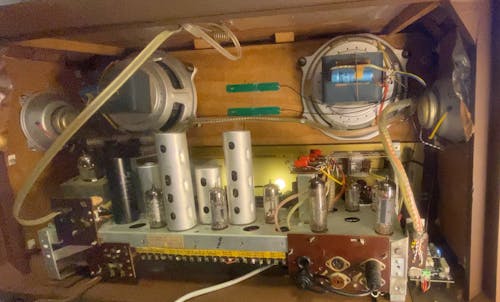The home entertainment system usually has around two types of parts: stereo amplifiers and AV receivers.
Despite their external similarities, these devices' operation varies substantially. You base your decision between a stereo amp and AV receivers mostly on your home entertainment needs.
Although both systems share some basic aspects, they each have their own set of functionalities.
We'll look at the exact differences between the two, and you can follow the instructions from this article.
After that, you will know more details between the amplifier and AV receivers. And you can make an informed decision when purchasing a home entertainment system.
Stereo Amplifiers Only Receive Sound
Essentially, an amplifier amplifies sound impulses. It connects to a music player with a cable to send sound to the amplifier. Once received, the amplifier processes the music in a variety of ways.
The stereo amplifier's power, measured in watts, determines the quality and volume of sound it generates. As a result, higher-powered amplifiers produce better and clearer sound than their lower-powered counterparts.
AV receivers process both audio and video signals and its output remains unaffected by power rating.
AV Stereo Receiver Receive Sound and Video
AV receivers can receive sound and visual information from radio, video games, and CD/DVD players. Once received, the AV receiverS send these signals to a variety of devices, including speakers and televisions.
The AV receivers can easily switch between different inputs to make one output, with lots of volume and sound options.
In addition to displaying visual content, it reproduces audio signals. The AV receivers specifically function as central hub and controller for your audio and video needs. In contrast, an amplifier cannot process video input.
Music Quality Differences
Stereo amplifiers are better for playing music than AV receivers. They have a function specifically for music playback. This allows them to provide higher sound quality.
The stereo amp controls and improves audio quality for music playback. It enhances sound quality and is the main control unit for audio.
For the best music sound, pick a stereo amp instead of an A/V receiver.
Receive HDMI Connectors Ability
AV receivers now have HDMI connections for sending audio and video up to 1080p resolution. In addition, some AV receivers offer 4K and HDR video transmission.
These HDMI connectors can handle a variety of surround sound codecs and also enable audio return channel capability.
AV Receiver With Surround Sound Supported
The AV receivers have 5 audio amplifiers. It also has a subwoofer output. This allows for a 5.1-channel setup. This setup includes front, center, and surround speakers.
It also contains a powered subwoofer to improve sonic depth. In contrast, an amplifier has only two built-in amplifiers. And we will use the stereo amp to connect the two-channel speakers.
This speaker system can have up to four speakers, but it doesn't give a true surround sound. The extra speakers just copy the main one, getting power from the same amplifier and sharing sound between them.
The A/B speaker option helps play music in large rooms or send sound to nearby areas. As a result, the amplifier lacks surround sound decoding and advanced audio processing features.
Analog and Digital Connectors
The AV receivers decode surround sound for Dolby Digital and DTS codecs. You can find these codecs on DVDs, Blu-ray Discs, streaming platforms, and TV broadcasts.
This capability allows for the processing of both digital and analog audio signals. Stereo amplifiers now come with digital optical and coaxial audio systems.
These systems help them work better with CD, DVD, and Blu-ray players. They also improve function with online streaming services.
Unfortunately, these developments do not include accessing or sending Dolby Digital or DTS surround audio signals.
At best, they can handle a two-channel PCM audio signal. Essentially, this means that while stereo amplifiers excel at analog audio connections, their digital connectivity possibilities are limited.
When to Use Stereo Amplifiers VS. AV Receivers
If your goal is to create a high-fidelity system, you can choose the stereo amp.
Typically, AV Receivers are the better choice for creating a home entertainment setting. This scenario necessitates more speakers and thus more channels for powering them, making a stereo amplifier insufficient.
Certainly, exceptions to this rule exist, such as adding amplifiers to a system alongside an existing receiver.
However, we will use stereo amplifiers for hi-fi applications; whilst use AV receivers are for home theater setups.
Final Thoughts
In summary, stereo amps outperform AV receivers in music playback because that is their primary purpose.
AV receivers power features and speakers, while stereo amps send power from the source to speakers.
But we need to know, that some stereo amplifiers may not support all the devices that work with the AV receivers.
Amplifiers and receivers are powerful sound control centers, they can play high-quality music in your space. However, each has special features.
Amplifiers provide unrivaled flexibility and superior sound, but they often demand a large amount of space.
AV Receivers provide surround sound, act as amplifiers for home theaters, play videos well and are compact.





































Leave a comment
All comments are moderated before being published.
This site is protected by hCaptcha and the hCaptcha Privacy Policy and Terms of Service apply.